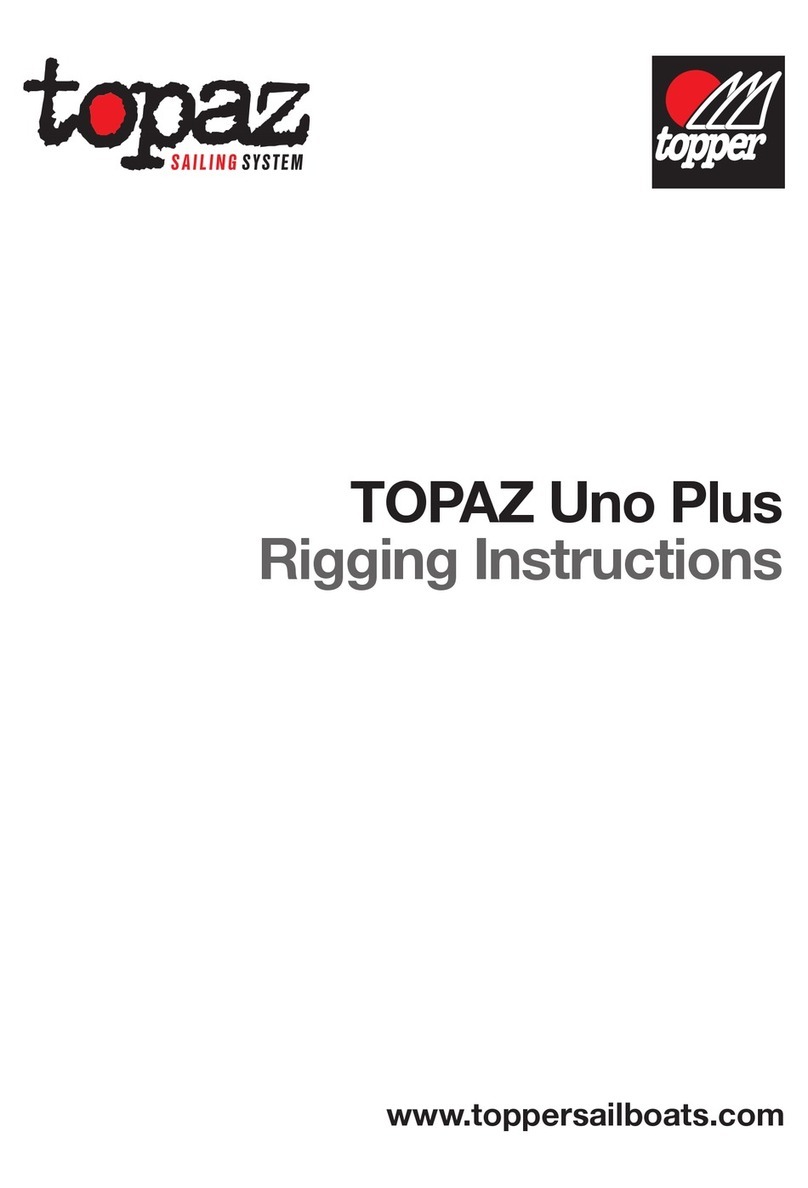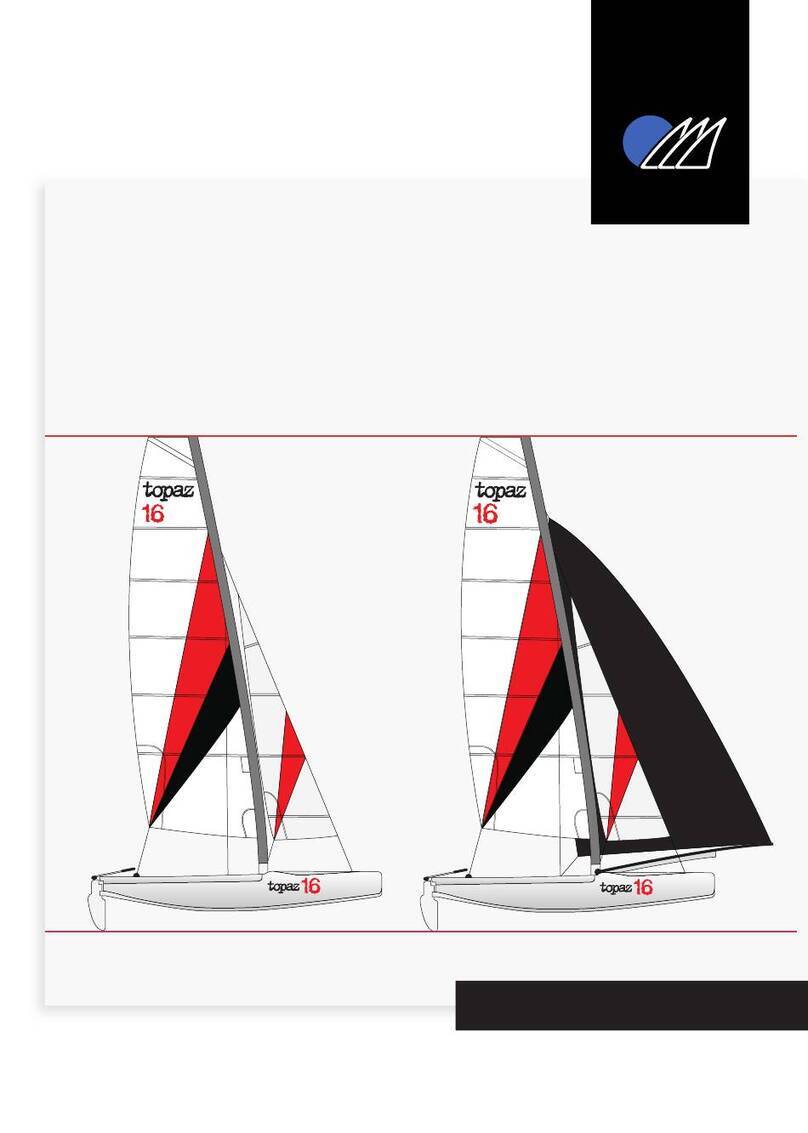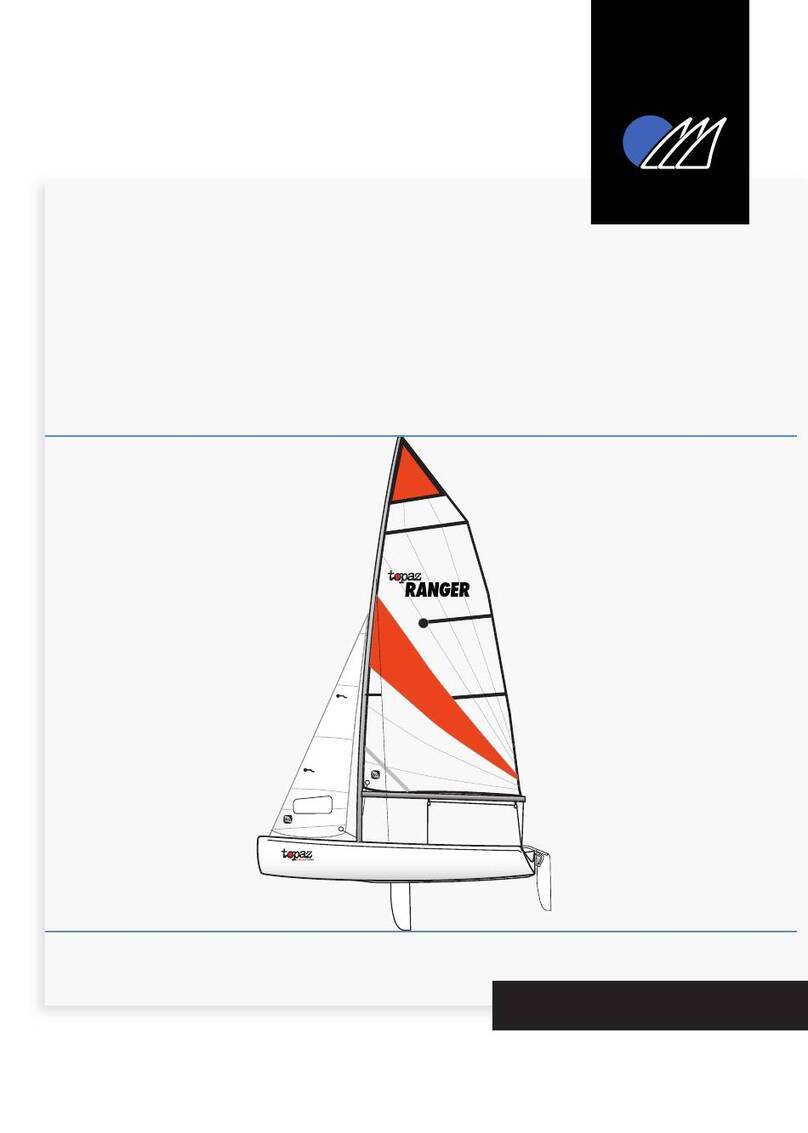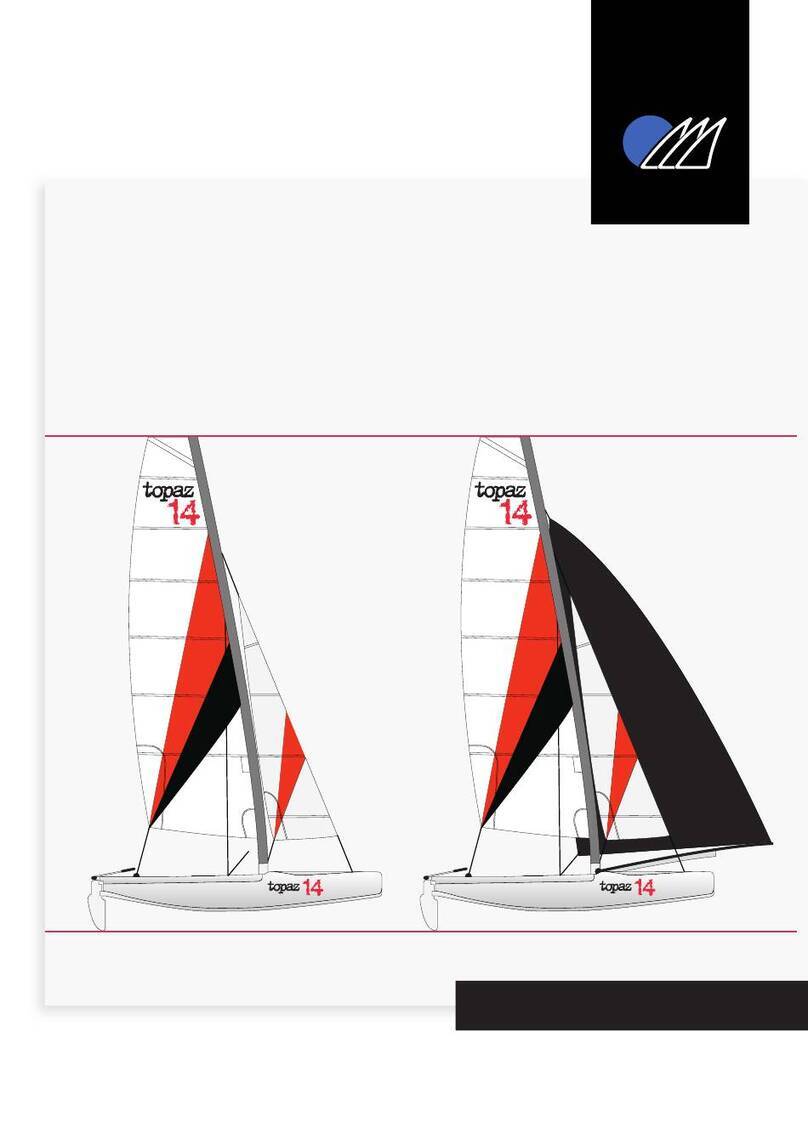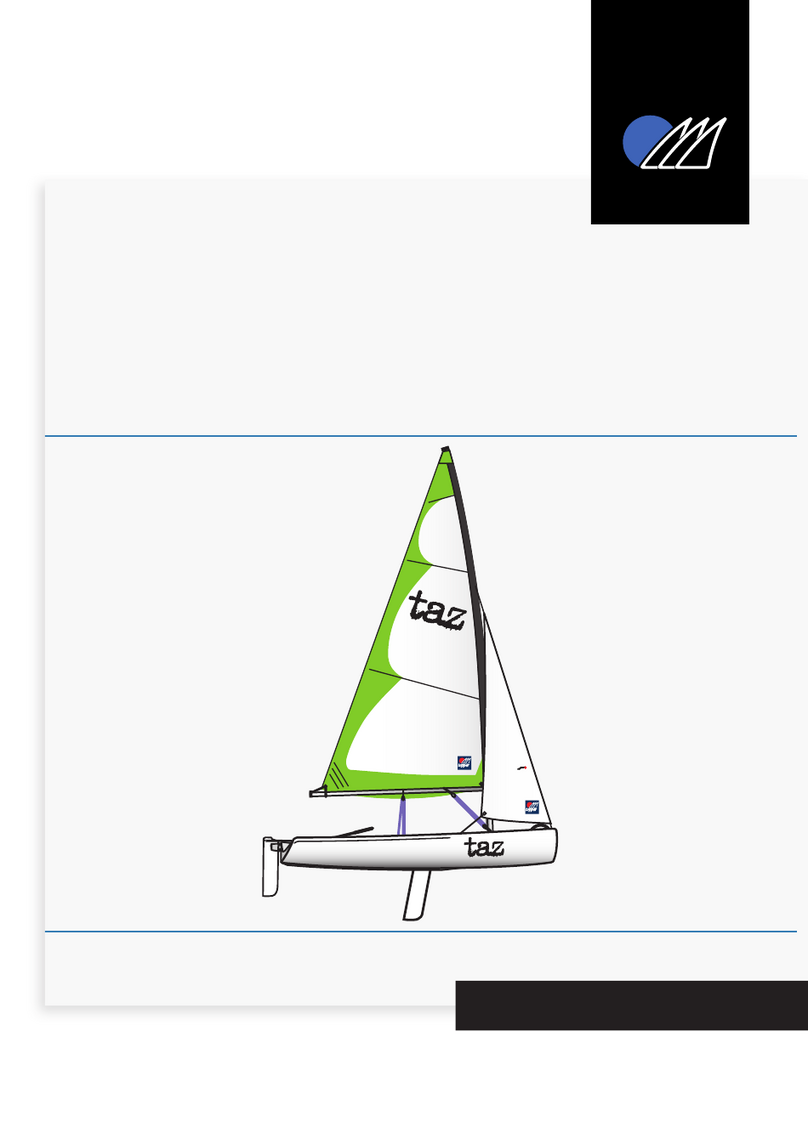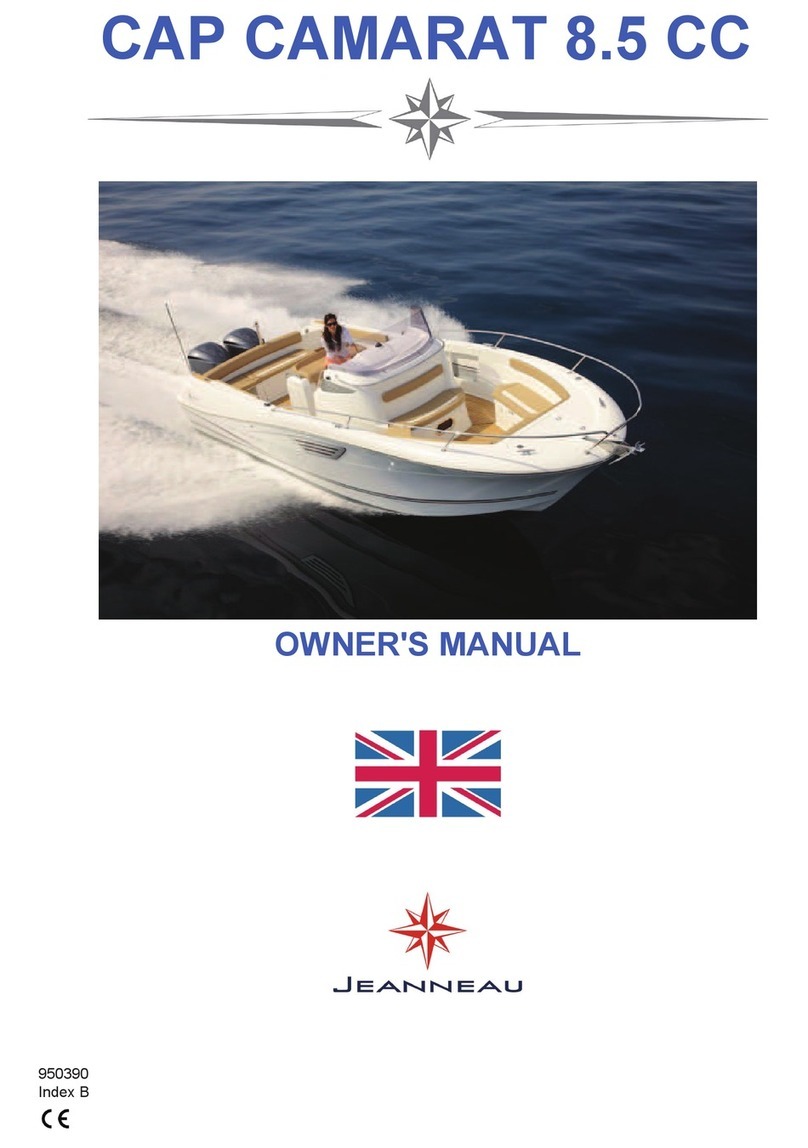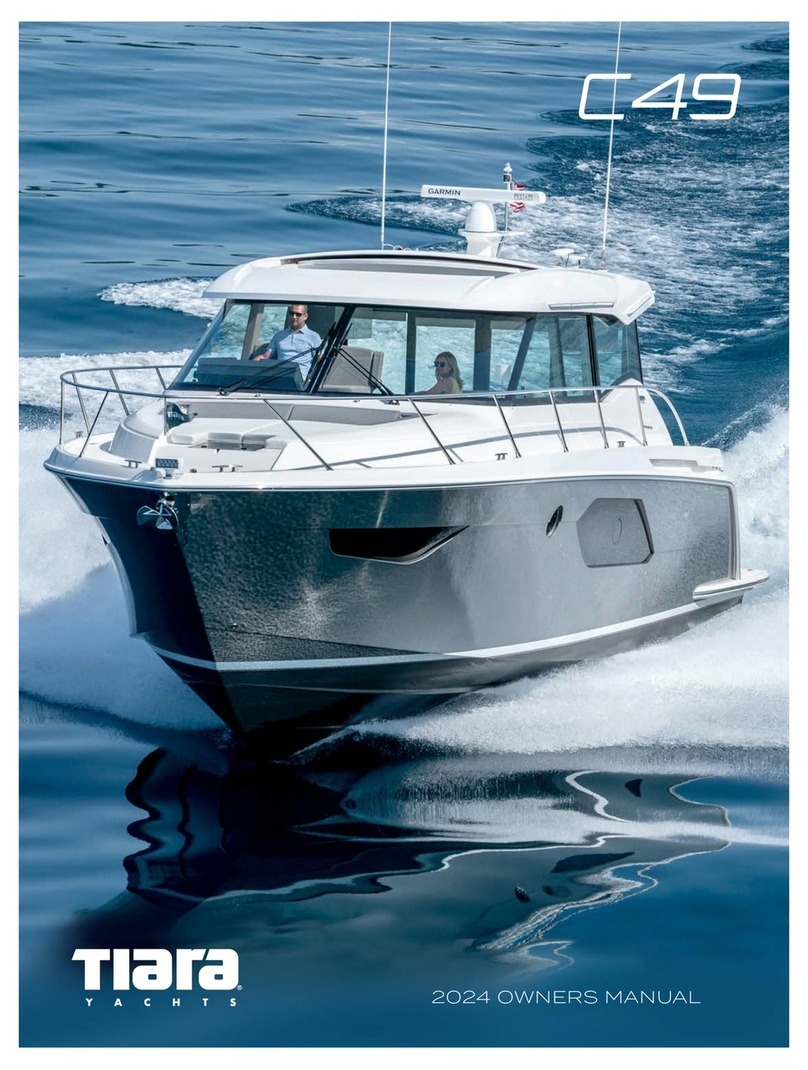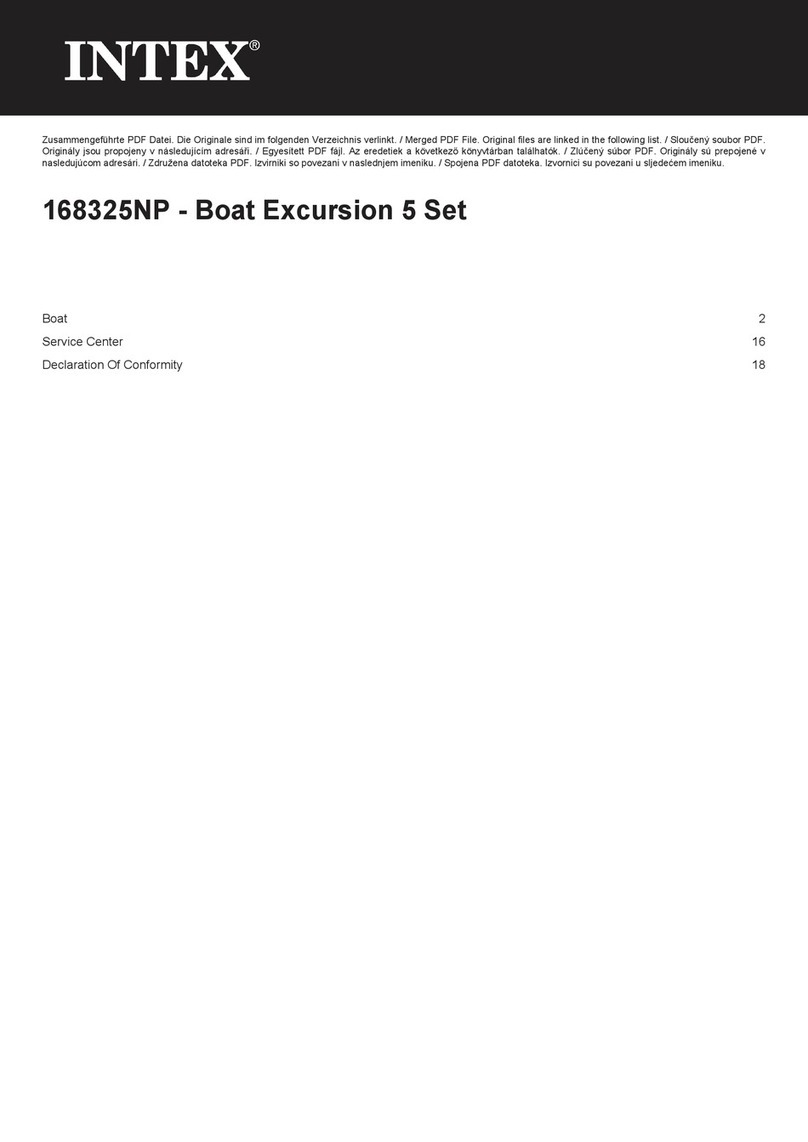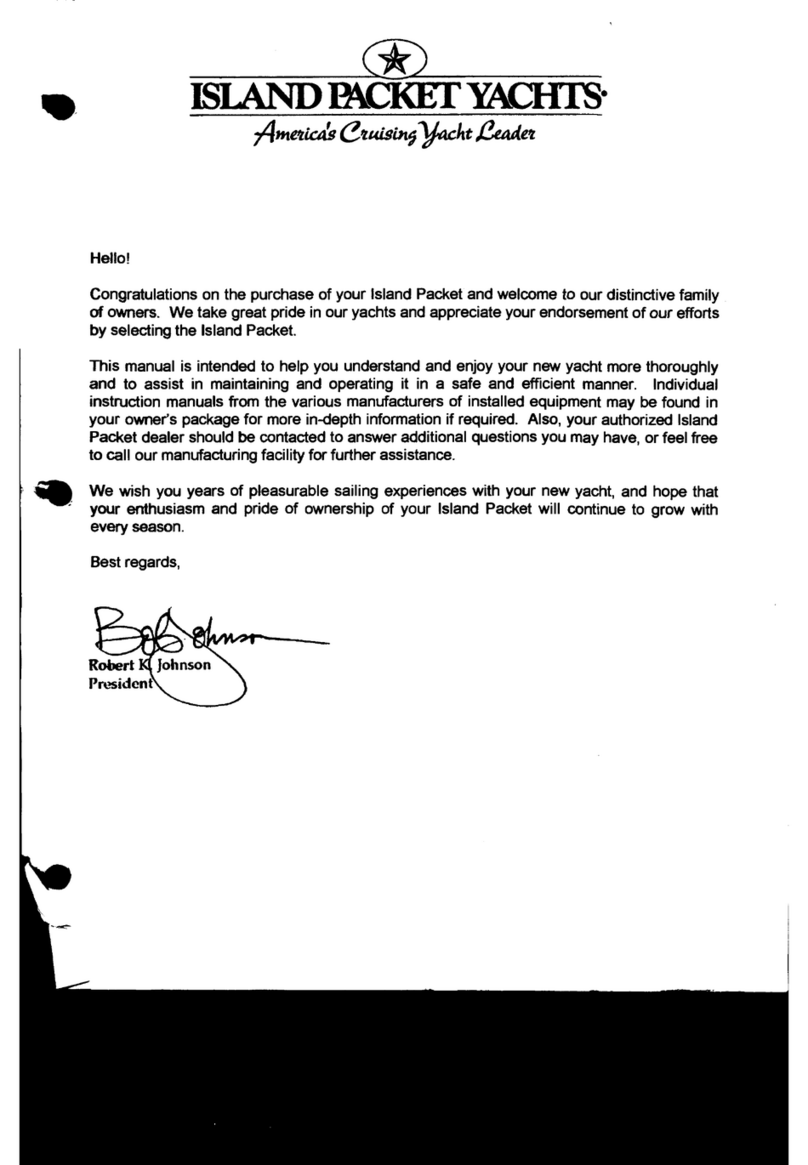
1
»Introduction
»Manufacturers Details
»
»Glossary/Useful Terminology
»Parts of the Maverick
»SAIL - “Dinghy Style”
»SUS - “Stand Up Sailing”
»WINDSURF - “Cruiser Explorer”
»SUP - “Single/Double
»Launching and Basic Safety on
the Water
»Care, Maintenance & Service
contents
introduction
For further information, spares and
accessories, please contact the
manufacturer:
TOPPER INTERNATIONAL LTD,
Kingsnorth Technology Park,
Wotton Road, Ashford, Kent TN23 6LN
Telephone +44 (0) 1233 629186
email info@toppersailboats.com
These RIGGING INSTRUCTIONS have been compiled to
help you to rig your Topaz FUSION sailing dinghy. Please
also ensure that you refer to your TOPAZ OWNERS
MANUAL.
The OWNERS MANUAL has been compiled to help you to
operate your craft with safety and enjoyment. It contains
systems and information on its operation and maintenance.
Please read it carefully and familiarise yourself with the craft
before using it.
you are not familiar with, for your own comfort and safety,
please ensure that you obtain handling and operating
experience before assuming command of the craft. Your
dealer or national sailing federation or yacht club will be
pleased to advise you of local sea schools, or competent
instructors.
PLEASE KEEP THE RIGGING INSTRUCTIONS AND THE OWNERS
MANUAL IN A SECURE PLACE AND HAND THEM OVER TO THE
NEW OWNER WHEN YOU SELL THE CRAFT.






